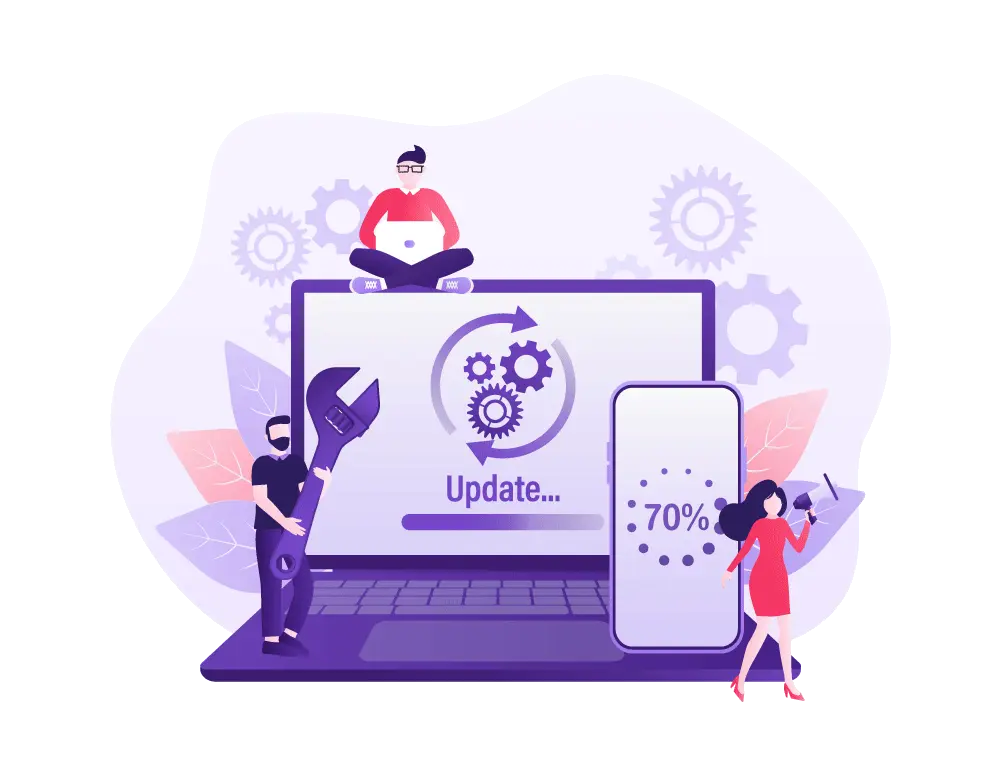Website Maintenance Service
In the dynamic digital landscape of India, maintaining a robust online presence is crucial for businesses to stay competitive and relevant. Website maintenance services in India offer comprehensive solutions to ensure that websites are continuously updated, secure, and optimized for performance.Our website maintenance services are designed to ensure that your website remains secure, up-to-date, and optimized for performance, allowing you to focus on running your business while we take care of the technical details.
The Importance of
Website Maintenance
SEO Benefits
Search engines like Google prioritize mobile-friendly websites in their search results.
Improved User Experience
A responsive website its layout and content based on the device being used, it's a desktop, tablet, or smartphone.
Accessibility
With the increasing use of mobile devices to access the internet, having a responsive website eithat your content .
Cost-Effectiveness
Maintaining a separate mobile version of your website can be costly and time-consuming.
Faster Loading Times
Responsive websites are designed to load quickly on all devices, which is crucial for retaining visitors and reducing bounce rates.
Competitive Advantage
With the increasing use of mobile devices to access the internet, having a responsive website eithat your content .
Journey to Website Maintenance

Assessment and Planning

Content Review and Updates

Security and Performance Optimization

Technical Maintenance and Updates

User Experience and Accessibility

Monitoring and Analysis
Why Choose Webixnet?
How To Manage Website Maintenance Solutions
Content Updates
Regularly updating website content to keep it fresh, relevant, and engaging for visitors. This includes adding new content, updating existing content, and removing outdated or inaccurate information.
Security Checks and Updates
Implementing security measures to protect the website from cyber threats, such as malware, hacking attempts, and data breaches. This involves installing security updates for the website’s platform (e.g., CMS, plugins), using secure authentication methods, and monitoring for suspicious activities.
Backup and Disaster Recovery
Creating regular backups of the website’s files and databases to ensure that data can be quickly restored in case of data loss or website issues. Implementing disaster recovery plans to minimize downtime and ensure business continuity.
Performance Optimization
Optimizing website performance to improve loading times, user experience, and search engine rankings. This includes tasks such as optimizing images and multimedia content, enabling caching, minifying CSS and JavaScript files, and optimizing server response times.
Technical Maintenance
Performing routine technical maintenance tasks to ensure the smooth operation of the website. This includes updating software (e.g., CMS, plugins, themes), monitoring server performance and uptime, and resolving technical issues as they arise.
User Experience Enhancement
Improving the overall user experience (UX) of the website to make it more intuitive, accessible, and user-friendly. This involves optimizing website navigation, improving page layouts and design, and ensuring compatibility with various devices and browsers.
Search Engine Optimization (SEO)
Implementing SEO best practices to improve the website’s visibility and ranking in search engine results. This includes optimizing meta tags, headers, and other on-page elements, creating high-quality content, and building backlinks from reputable sources.
Monitoring and Analytics
Monitoring website performance, traffic, and user behavior using analytics tools to track key metrics and identify areas for improvement. Analyzing website data to make data-driven decisions and continuously optimize the website for better results.
Legal Compliance
Ensuring that the website complies with relevant laws and regulations, such as data protection and privacy laws (e.g., GDPR), accessibility standards (e.g., WCAG), and copyright laws.
Continuous Improvement
Continuously evaluating and updating the website to meet evolving business needs, technological advancements, and user expectations. This includes soliciting feedback from users, stakeholders, and industry experts to identify areas for enhancement and prioritize future updates accordingly.
Our Asked Questions
Security: Regular updates and security enhancements help protect your website from security threats and breaches.
Functionality: Maintenance ensures that your website remains functional and user-friendly, providing a positive experience for visitors.
Performance: Optimization improves website speed and performance, leading to better user engagement and higher search engine rankings.
Freshness: Content updates keep your website relevant and up-to-date, attracting and retaining visitors.
● Software updates
● Content updates
● Security enhancements
● Performance optimization
● Backup and recovery
● Technical support
● SEO maintenance
● Content management
● Responsive design updates
● Analytics and reporting







